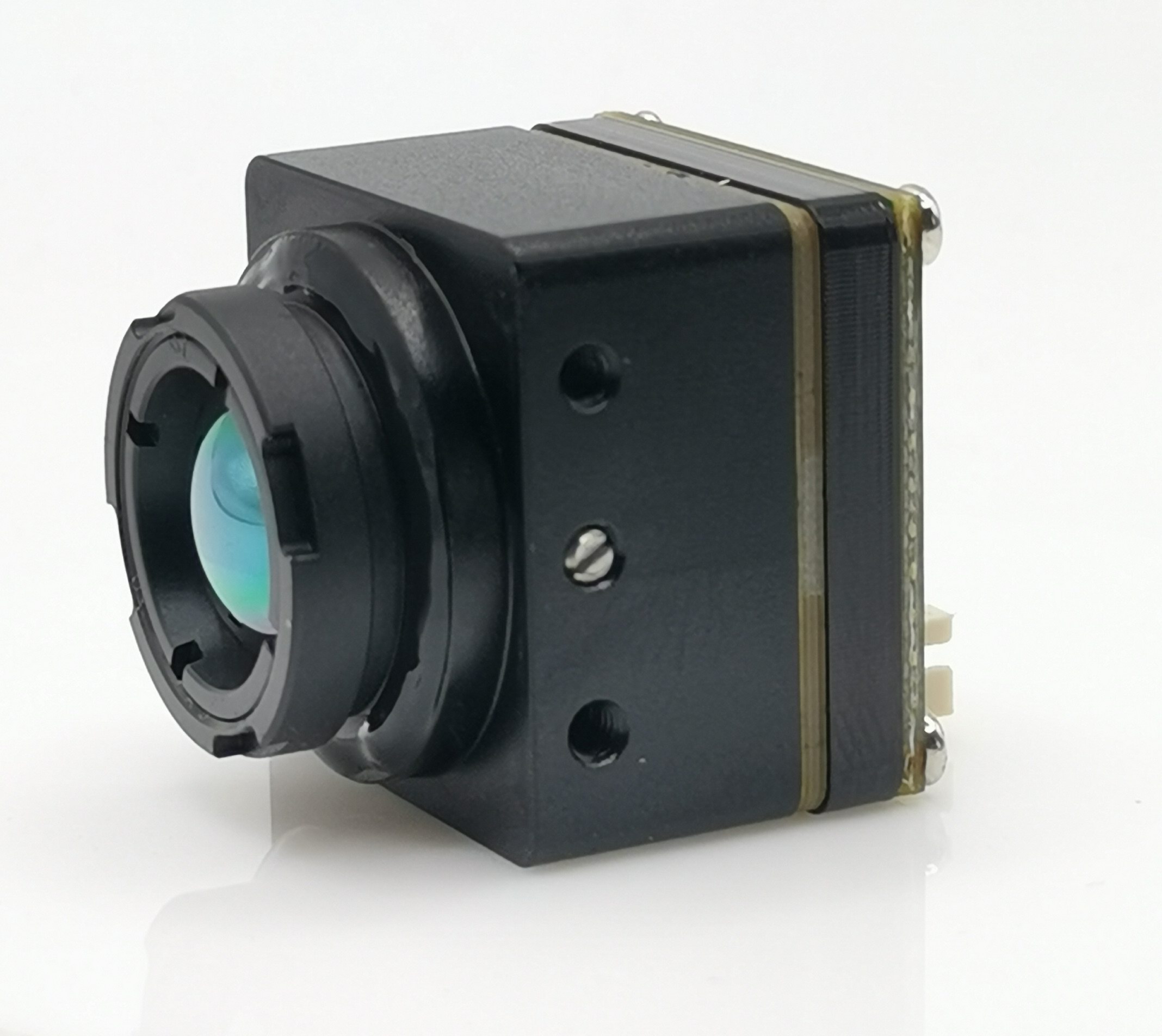Analog FPV Thermal Camera vs. Drone with Thermal Imaging Camera: A Detailed Comparison

Exploring the Basics: Analog FPV Thermal Cameras and Drones with Thermal Imaging
What is an Analog FPV Thermal Camera?
An analog FPV thermal camera is a specialized imaging device that captures thermal radiation emitted by objects in the environment. These cameras operate on the principle of detecting temperature differences to create a visual representation of heat patterns. The basic functionality involves converting thermal energy into visible light, allowing users to observe and analyze temperature variations. In today's world, analog FPV thermal cameras are widely used in various applications such as wildlife monitoring, building inspections, and search and rescue operations.
The Rise of Drones with Thermal Imaging Cameras
With advancements in technology, drones equipped with thermal imaging cameras have gained significant popularity. These drones utilize infrared sensors to detect and visualize heat signatures emitted by objects. They work by capturing thermal data and translating it into actionable insights. The diverse applications across industries include agriculture for crop health assessment, infrastructure for identifying heat leaks, and public safety for search and rescue missions.
Delving into Analog FPV Thermal Cameras: Features and Benefits
Analog FPV thermal cameras offer a range of features and benefits that make them valuable tools for various applications. Let's explore some key aspects that set these cameras apart.
Key Features of Analog FPV Thermal Cameras
Analog FPV thermal cameras are designed with specific features to enhance their functionality and usability:
Lightweight and Compact Design
These cameras are engineered to be portable and unobtrusive, allowing for seamless integration with drones without compromising flight performance. The compact design ensures that the overall weight of the drone is minimally impacted, enabling agile maneuverability during operations.
Temperature Sensitivity and Image Enhancement
Temperature sensitivity is a crucial aspect of analog FPV thermal cameras, enabling them to detect even subtle variations in heat signatures. Additionally, these cameras often incorporate advanced image enhancement capabilities to improve the clarity and detail of thermal images, providing users with a comprehensive view of the environment.
Why Choose an Analog FPV Thermal Camera?
The advantages of using an analog FPV thermal camera become evident in specific scenarios where their unique features shine:
Advantages in Specific Scenarios
In scenarios requiring discreet aerial surveillance or rapid deployment for search and rescue missions, the lightweight nature of analog FPV thermal cameras makes them ideal for capturing real-time thermal data without impeding operational efficiency. Their temperature sensitivity also allows for precise detection of heat anomalies in diverse environments.
The iSun FPV Thermal Camera: A Case Study
The iSun FPV thermal camera exemplifies the practical benefits of analog FPV technology. With its compact form factor and high temperature sensitivity, this camera has been instrumental in various applications ranging from wildlife monitoring to infrastructure inspections.
Understanding Drones with Thermal Imaging Cameras: Capabilities and Advantages
Drones equipped with thermal imaging cameras offer advanced capabilities that significantly enhance their effectiveness in various applications.
Advanced Capabilities of Thermal Imaging Drones
High-Resolution Imaging
The integration of high-resolution thermal imaging sensors in drones with thermal imaging cameras enables the capture of detailed thermal data. This high level of resolution allows for precise detection and analysis of temperature variations across different surfaces and objects, providing valuable insights for diverse industries.
Integration with Advanced Drone Technologies
In addition to thermal imaging capabilities, modern drones with thermal imaging cameras are integrated with advanced technologies such as GPS navigation, obstacle avoidance systems, and real-time data transmission. This integration enhances the overall operational efficiency and safety of the drones, making them reliable tools for complex aerial missions.
The Benefits of Using a Drone with Thermal Imaging Camera
Broad Application Spectrum
The versatility of drones with thermal imaging cameras extends to a broad spectrum of applications, including but not limited to agriculture, environmental monitoring, and infrastructure inspections. These drones play a crucial role in assessing crop health, identifying heat loss in buildings, and conducting aerial surveys for environmental research.
Enhancing Efficiency and Safety
By leveraging thermal imaging technology, drones equipped with thermal imaging cameras contribute to enhancing operational efficiency and safety standards. They enable quick identification of potential hazards, facilitate search and rescue operations in challenging environments, and provide valuable data for preventive maintenance in industrial settings.
Making the Right Choice: Which Camera Suits Your Needs?
Comparing Analog FPV Thermal Cameras and Drones with Thermal Imaging Cameras
When considering the choice between analog FPV thermal cameras and drones with thermal imaging cameras, several factors come into play. Understanding the distinct characteristics of each type of camera is essential in making an informed decision.
Factors to Consider
Portability: An analog FPV thermal camera offers exceptional portability, allowing for seamless integration with drones without compromising flight performance. On the other hand, drones with thermal imaging cameras may have larger payloads due to additional equipment, potentially affecting maneuverability.
Resolution: While both types of cameras provide thermal imaging capabilities, drones with thermal imaging cameras often boast higher resolution sensors, enabling detailed thermal data capture. In contrast, analog FPV thermal cameras may have a lower resolution but remain effective for various applications.
Application Flexibility: The choice between the two types of cameras depends on the specific application requirements. For scenarios where discreet aerial surveillance or rapid deployment is crucial, an analog FPV thermal camera proves advantageous. Conversely, for tasks demanding comprehensive aerial coverage and high-resolution thermal imaging, a drone equipped with a thermal imaging camera is more suitable.
Situational Suitability
The situational suitability of each camera type depends on the nature of the operation. In instances where real-time aerial monitoring or swift reconnaissance is needed, an analog FPV thermal camera excels due to its lightweight design and temperature sensitivity. Conversely, for missions requiring extensive area coverage or detailed thermographic analysis, a drone with a thermal imaging camera offers enhanced capabilities.
Personal Insights and Recommendations
My Experience with the iSun FPV Thermal Camera
In my experience using the iSun FPV thermal camera, I have found it to be exceptionally versatile and reliable in diverse environmental conditions. Its compact form factor and high temperature sensitivity have allowed me to capture precise thermal data during wildlife monitoring expeditions and infrastructure inspections.
Advice for Potential Users
For individuals seeking a portable solution for immediate aerial thermography needs in scenarios such as search and rescue operations or building inspections, an analog FPV thermal camera like the iSun model can be an invaluable asset. However, for comprehensive aerial surveys and high-resolution thermographic analysis across expansive areas, investing in a drone equipped with a thermal imaging camera would be beneficial.
Final Thoughts
Summarizing the Key Takeaways
As we conclude this detailed comparison between analog FPV thermal cameras and drones with thermal imaging capabilities, several key takeaways emerge. Analog FPV thermal cameras offer exceptional portability and temperature sensitivity, making them ideal for discreet aerial surveillance and rapid deployment in various scenarios. Their lightweight and compact design enables seamless integration with drones without compromising flight performance.
On the other hand, drones equipped with thermal imaging cameras boast advanced capabilities such as high-resolution imaging and integration with cutting-edge drone technologies. These drones cater to a broad spectrum of applications, ranging from agriculture and environmental monitoring to infrastructure inspections, significantly enhancing operational efficiency and safety standards.
When considering the choice between these two types of thermal imaging devices, it's essential to evaluate factors such as portability, resolution, and application flexibility based on specific operational requirements. Whether it's capturing precise thermal data in real-time or conducting comprehensive aerial surveys, the suitability of each device depends on the nature of the mission.
Looking Towards the Future of Thermal Imaging in Drones
The future of thermal imaging in drones holds immense potential for further advancements in technology and expanded applications across industries. With ongoing innovations in sensor technology, image processing algorithms, and drone capabilities, we can anticipate even higher levels of precision and efficiency in capturing thermal data from aerial perspectives.
Furthermore, the integration of artificial intelligence (AI) and machine learning algorithms is poised to revolutionize the analysis and interpretation of thermal imagery obtained from drones. This development will not only streamline data processing but also enable predictive maintenance solutions for critical infrastructure based on thermal anomaly detection.
In conclusion, as thermal imaging continues to evolve alongside drone technology, we can expect an increasingly pivotal role played by these integrated systems in diverse fields such as agriculture, public safety, environmental conservation, and industrial inspections.
Let's embrace the exciting prospects that lie ahead as we harness the power of thermal imaging in conjunction with drone operations.
I have summarized the key takeaways from our comparison between analog FPV thermal cameras and drones with thermal imaging capabilities. Additionally, I have provided insights into the future advancements expected in this field. If you need any further adjustments or additions to this section, feel free to let me know!
See Also
Comparing Analog FPV Thermal Cameras for Drones in Detail
Benefits of Analog FPV Thermal Cameras for Drones
Analog FPV Thermal Camera: Revolutionizing Drone Tech and Surveillance
Benefits of Analog FPV Thermal Cameras for DJI Drones
Becoming a Drone Photography Expert with Analog FPV Thermal Cameras
Contact Us: Ms. Coco Huang
E-mail: sales@iasun.cn
WhatsApp/Wechat: +86 13510421923

